The Science of Cooking a Turkey, and Other Thanksgiving Dishes
In a new book, the editors of Cook’s Illustrated share some secrets to preparing the perfect holiday feast
![]()
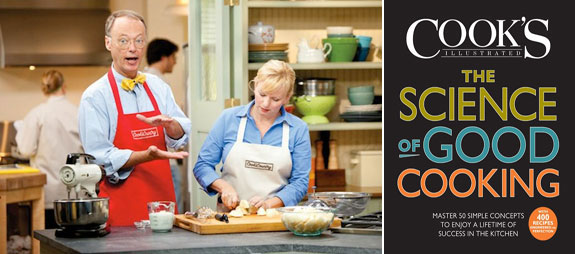
Christopher Kimball on the set of America’s Test Kitchen with Bridget Lancaster. Photo by Daniel J. Van Ackere.
Christopher Kimball, the bow-tied host of America’s Test Kitchen and founder of Cook’s Illustrated magazine, knows the difference between good cooks and great cooks. Great cooks—and he has built his empire on this premise—understand the scientific principles involved in their techniques. They are fluent in the different modes of heat transfer: radiant heat, convection and conduction. They can explain how diffusion and osmosis maintain equilibrium in their recipes. And, perhaps most impressively, they harness this scientific knowledge to defy gravity—when making soufflés and other baked goods rise.
In a recent presentation at the National Museum of American History, Kimball flashed a photograph of Albert Einstein. “Einstein was so smart not to get involved,” he said. “The science of cooking is actually much more complicated than particle physics.”
Luckily, Kimball and his crew of editors, test cooks and food scientists at the actual test kitchen, a 2,500-square-foot culinary laboratory just outside of Boston, unpack the science and serve it to us in bites we can chew on. I’ve found that the team’s latest book, The Science of Good Cooking, offers helpful tips in explaining the science behind some Thanksgiving favorites.
Brining a Turkey
A brine is a simple solution of salt and water. When you place a turkey in a brine, both the salt and the water move from an area of greater concentration (the brine) to an area of lesser concentration (the meat) in processes called diffusion and osmosis. The added water in the turkey’s muscle cells makes the meat juicier. Meanwhile, the proteins in the turkey rearrange to incorporate the sodium and chloride ions from the salt. “This reshaping helps the proteins to hold on to the added water, even after the meat is cooked,” say the editors. The reconfiguring of the proteins also makes makes the meat more tender.
The editors of Cook’s Illustrated offer up a simple brine recipe. A 12- to 17-pound turkey should soak in 2 gallons of cold water and 1 cup of table salt for 6 to 12 hours. An 18- to 24-pounder should sit in 3 gallons of cold water and 1 1/2 cups of table salt, also for 6 to 12 hours. If you are making a bone-in turkey breast, it requires 1 gallon of cold water and 1/2 cup of table salt for a brining time of 3 to 6 hours.
Cooking Green Beans—Just Enough
I am not a fan of green bean casserole. You know, the one with french fried onions sprinkled on the top? My biggest gripe is that the beans are much too mushy. Kimball and his colleagues share the secret to firm, yet tender, brightly colored green beans (and any other green vegetables, for that matter). “It’s all about a high-heat blanch followed by an ice-cold shock,” they note.
As soon as the green beans hit boiling water, their color brightens. “Some of the air contained between their cells expands and bubbles off, bringing the cell walls closer together and causing the plant tissue to become more transparent, producing a brighter green color,” the team reports. The heat causes the beans to tenderize. How? The polymer, pectin, which gives the vegetable’s cell walls their structure, breaks down and water leaks from the cells. The optimal boiling time for green beans, according to the pros, is three to five minutes. If you boil any longer, your beans will be pretty limp. After some time, the color of the beans will also dull—a result of the chlorophyll molecules losing their magnesium ions in the heat. Tossing the beans into a bowl of ice water stops these processes.
Mixing Fluffy Mashed Potatoes
For the best results, the America’s Test Kitchen folks suggest russet potatoes. Potatoes are anywhere from 16 to 22 percent starch, and russets are on the starchier end of that range. “When potatoes are cooked the granules absorb water from within the potato and swell like balloons, causing the cells that contain them to expand, separate and eventually burst,” says the book. “This, in turn, translates to a potato that falls apart when cooked.” A crumbly potato is an easily mashable potato. Russets also have more amylose starch molecules, as opposed to amylopectin; amylose is a sponge for liquid. “Just what you want when adding dairy to mashed potatoes,” say the pros.
Preparing Flavorful Sage Stuffing
At Thanksgiving, my mother prepares, as many do, a delicious sage stuffing. But why sage? Well, sage is a hearty herb, meaning its flavor compounds can withstand cooking. (To Kimball’s team, sage, rosemary, oregano, thyme and marjoram are all hearty herbs, whereas basil, parsley, cilantro, dill, mint, chives and tarragon are delicate herbs.) The sage releases its flavors during the hours that a stuffed turkey cooks.
Test cooks compared fresh herbs to dried herbs in 24 different recipes (other than stuffing), and in all but one case, tasters preferred fresh. Be warned, though, “Ounce for ounce, dried herbs are more potent than fresh,” according to the book. So, if your stuffing recipe calls for dried sage, the test cooks recommend you quadruple the measurement for fresh sage leaves.
Rolling the Perfect Pie Crust
“Perfect pie dough has just the right balance of tenderness and structure. The former comes from fat, the latter from long protein chains called gluten that form when flour mixes with water,” say the editors of Cook’s Illustrated. “Too little gluten and the dough won’t stick together—but too much and the crust turns tough.”
The test cooks at America’s Test Kitchen suggest using a combination of water and vodka, in place of the water that a crust recipe calls for. When vodka is added to flour, its molecules, unlike water, do not cause the proteins to reconfigure into gluten. “Using a mixture of vodka and water allows us to add more liquid to the dough to get it to be as malleable and easy to work with as possible without causing excessive toughness,” the testers report.
If you don’t have vodka, feel free to use rum, whiskey or gin. “Surprisingly, the vast majority of our tasters could not distinguish among the different flavors of booze,” say the editors. Any 80-proof liquor will do.
Find more tips from The Science of Good Cooking at Food and Think.
/https://tf-cmsv2-smithsonianmag-media.s3.amazonaws.com/accounts/headshot/megan.png)
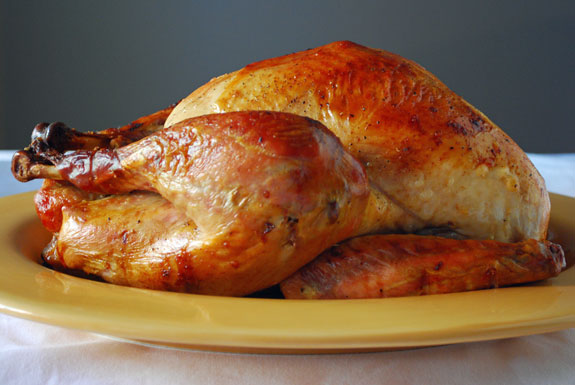

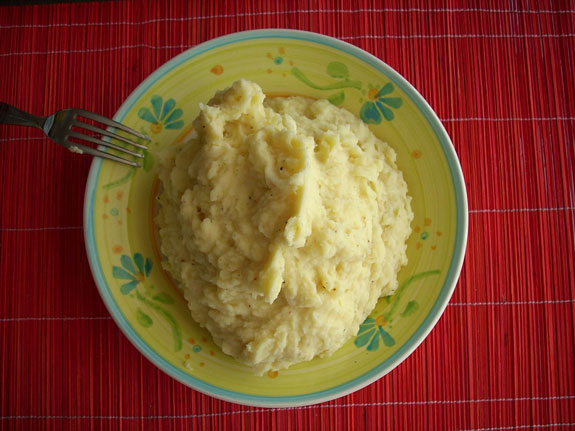
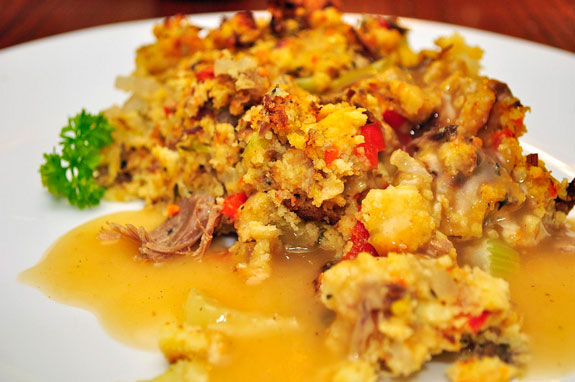
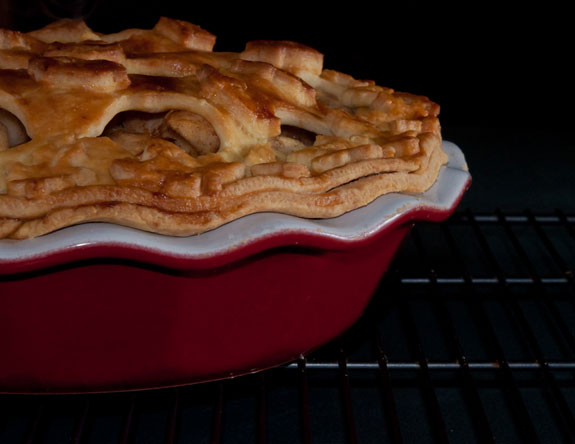
/https://tf-cmsv2-smithsonianmag-media.s3.amazonaws.com/accounts/headshot/megan.png)